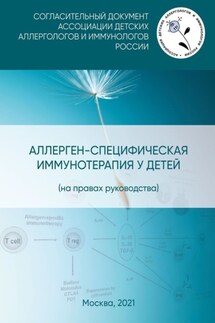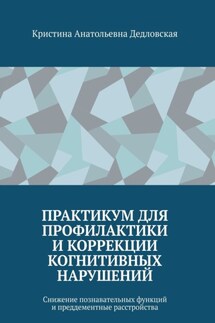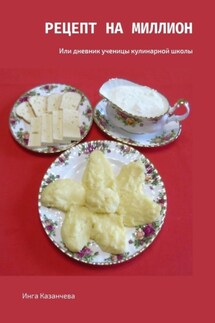Аллерген-специфическая иммунотерапия у детей (на правах руководства). Согласительный документ Ассоциации детских аллергологов и иммунологов России - страница 16
42. Mondoulet L, Dioszeghy V, Busato F et al. Gata3 hypermethylation and Foxp3 hypomethylation are associated with sustained protection and bystander effect following epicutaneous immunotherapy in peanut-sensitized mice. Allergy. 2019;74 (1):152—164.
43. Pawlowski M, Jerzynska J, Podlecka D, Stelmach W, Majak P, Stelmach I. Effectiveness of immunotherapy in children depends on place of living – A pilot study. Allergol Immunopathol (Madr). 2017;45 (3):272—275.
44. Radulovic S, Jacobson MR, Durham SR, Nouri-Aria KT. Grass pollen immunotherapy induces Foxp3-expressing CD4+ CD25+ cells in the nasal mucosa. J Allergy Clin Immunol. 2008;121:1467—1472.
45. Burks AW, Calderon MA, Casale T, Cox L, Demoly P, Jutel M et al. Update on allergy immunotherapy: American Academy of Allergy, Asthma & Immunology/European Academy of Allergy and Clinical Immunology/PRACTALL consensus report. J Allergy Clin Immunol. 2013;131:1288—1296.
46. Slovick A, Douiri A, Muir R, Guerra A, Tsioulos K, Hay E et al. Intradermal grass pollen immunotherapy increases TH2 and IgE responses and worsens respiratory allergic symptoms. J Allergy Clin Immunol. 2017;139:1830—1839.
47. Mantyla J, Thomander T, Hakulinen A et al. The effect of oral immunotherapy treatment in severe IgE mediated milk, peanut, and egg allergy in adults. Immun Inflamm Dis. 2018;6:307—311.
48. Begin P, Nadeau KC. Changes in peanut-specific T-cell clonotype with oral immunotherapy. J Allergy Clin Immunol. 2015;135:1636—1638.
49. Tanaka Y, Nagashima H, Bando K et al. Oral CD103 (-) CD11b (+) classical dendritic cells present sublingual antigen and induce Foxp3 (+) regulatory T cells in draining lymph nodes. Mucosal Immunol. 2017;10:79—90.
50. Smaldini PL, Trejo F, Cohen JL, Piaggio E, Docena GH. Systemic IL-2/anti-IL-2Ab complex combined with sublingual immunotherapy suppresses experimental food allergy in mice through induction of mucosal regulatory T cells. Allergy. 2018;73:885—895.
51. Okamoto Y, Fujieda S, Okano M, Yoshida Y, Kakudo S, Masuyama K. House dust mite sublingual tablet is effective and safe in patients with allergic rhinitis. Allergy. 2017;72:435—443.
52. Durham SR, Penagos M. Sublingual or subcutaneous immunotherapy for allergic rhinitis? J Allergy Clin Immunol. 2016;137:339—349.
53. Patterson AM, Bonny AE, ShielsWE, Erwin EA. Three-injection intralymphatic immunotherapy in adolescents and young adults with grass pollen rhinoconjunctivitis. Ann Allergy Asthma Immunol. 2016;116:168—170.
54. Johansen P, von Moos S, Mohanan D, Kundig TM, Senti G. New routes for allergen immunotherapy. Hum Vaccin Immunother. 2012;8:1525—1533.
55. Lee SP, Choi SJ, Joe E et al. A pilot study of intralymphatic immunotherapy for house dust mite, cat, and dog allergies. Allergy Asthma Immunol Res. 2017;9:272—277.
56. Hylander T, Larsson O, Petersson-Westin U, et al. Intralymphatic immunotherapy of pollen-induced rhinoconjunctivitis: a double-blind placebo-controlled trial. Respir Res. 2016;17:10. doi:10.1186/s12931-016-0324-9
57. Aricigil M, Muluk NB, Sakarya EU et al. New routes of allergen immunotherapy. Am J Rhinol Allergy. 2016;30:193—197.
58. Campana R, Moritz K, Neubauer A et al. Epicutaneous allergen application preferentially boosts specific T cell responses in sensitized patients. Sci Rep. 2017;7 (1):11657.
59. Jones SM, Sicherer SH, Burks AW et al. Epicutaneous immunotherapy for the treatment of peanut allergy in children and young adults. J Allergy Clin Immunol. 2017;139:1242—1252.






